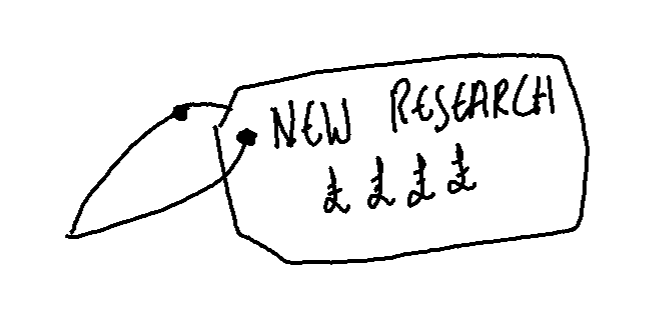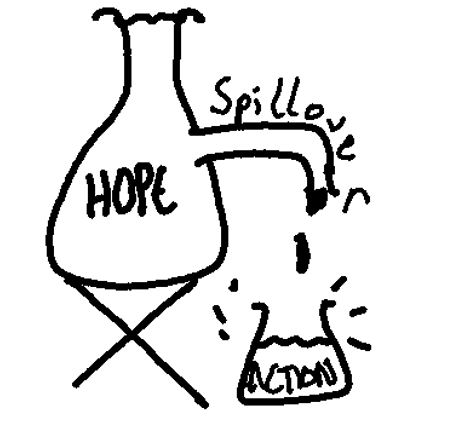Shifting towards symbiosis: How filmmakers and researchers can work together to make impact when communicating science
New scientific discoveries have become a popular feature of documentaries, natural history programmes and in the wider specialist factual television genre. From David Attenborough’s “Our Planet” series on Netflix, to Brian Cox’s “The Planets” series on BBC and even the BBC’s “Spring Watch” series, these science-based programmes successfully attract audiences who want to learn something new while being entertained.
But what is the role of the scientist in the filmmaking process and how truthfully is the science communicated? As if audiences are coming to these shows to learn something, does that suggest a certain responsibility for the reliability and accuracy of science that these stories tell? These are just some of the questions that I was left thinking about after attending the Wildscreen Network’s1 recent conference: Science in Storytelling2 which explored the process of translating science into stories.
There is a currency in firsts!
“Commissioning Science” panel
Throughout the day filmmakers, commissioners and scientists highlighted the importance of balancing three elements: new scientific discoveries, drama and emotion. This formula gives science the hook needed to attract audiences and gain media traction which are both things the commissioners need to see to justify the spend. Without the hook the shows are “zombie-like” in communicating information that audiences can easily find elsewhere3. But its more than this, there is a “currency in firsts” as emphasised by the “Commissioning Science” panel. New research sells! And it was clear that there is an increasing desire to work with scientists as filmmakers scouring all sources to find new exciting stories to tell.

What is a research consultant?
The role of the research consultant was heavily discussed, particularly in the “Striving for Symbiosis” panel. It was clear that more production companies are looking for consultants not only to fact check but to help a production find a new story or angle for their science-based stories. The consultant also plays an important role by acting on a local level within communities and environments to support the filmmakers to capture and accurately represent the science that is being communicated. However, this sparks many questions which were readily brought up by audiences: through whose perspective is this science communicated; what happens to the science that doesn’t have a clear hook; and how is the consultant compensated?

Acting as a consultant gives the researcher an opportunity to communicate their research to large audiences and create a potential platform to inspire social change. In some circumstances, such as when filming natural history documentaries, new scientific discoveries have been facilitated by the expensive equipment and techniques that are used by the filmmaking crews. However, it was warned that these processes have been extractive as in the past as they have not always fairly compensated the consultant for their time, efforts and expertise. Additionally, with the complexity of the filming Non Disclosure Agreements, which are industry standard paperwork, and the commissioner’s ownership of the footage, the consultant can get little access to what they helped film.
So, how do you build a symbiotic relationship between the filmmaker and consultant?
Communication! The patterns of a programme’s production often means that scientists are left in silence for months between when they are contacted to develop initial ideas and when the filming starts to be planned. Also, with the quantity of footage and stories that don’t make the final cut, stories often end up not being included in the final series, or looking quite different to what the consultants initially intended. This can sometimes be because the intended event or behaviour is very rare and didn’t happen when the filmmakers were there. Or because when on screen it doesn’t have the same hook as it does to the researcher in their findings. The best way to avoid this is for both sides to clearly communicate to help manage each other’s expectations throughout the entire process. After all, if the relationship is a good one, there may be more opportunities to film new research in the future which may increase the research’s social impact.

Science programmes are important!
Filmmakers and scientists alike explained that “behaviour is the first line of defence in a changing world”. With more scientists becoming activists to try to communicate their work and advocate for change, these series with their powerful storytelling tools and large audiences provide great opportunities to educate and inspire. But these are hard to pitch! Stories of climate change and environmental destruction have a reputation for being depressing4 and the possible futures that lie ahead are difficult to visualise. There is a risk that the negative stories that are commonly told today can polarise audiences and discourage change. It is therefore hard to know whether these programmes are effective at engaging audiences in action and measuring change is also difficult and expensive. This dilemma led to panellists’ questioning the popular vs worthwhile notion of the stories that were told. Are the stories we want to hear actually making a difference in the long run?
Despite these challenges, drama can help shed light on important topics as within the noise of misinformation and the mass of information platforms, new, emotional and entertaining stories stand out. The “Crafting the Truth” panel also called for the need to challenge the boundaries of traditional media genres in order to capture more diverse stories. The panel encouraged us all to question what types of science are not communicated – local, collective and communal knowledge – and how can media platforms could be utilised to give voice to these stories. They left me thinking, how can we frame stories that capture both sadness and hope and in doing so create “hopium” – addictively positive stories that encourage hope and spill over into action and engagement with social change.

Now production companies are more open to working with scientist consultants, Wildscreen’s event left a strong final message for scientists and filmmakers with the need to challenge the industry with new, hopeful, diverse and exciting stories that push boundaries, inspire change and make impact.
- To keep an eye out for future events put on by Wildscreen take a look at their website here: https://wildscreen.org/
↩︎ - To find out more about who spoke see this link: https://wildscreen.org/wp-content/uploads/2024/03/Science-in-Storytelling-Full-Programme-6.pdf
↩︎ - “Zombie-like” communication is based on the “information deficit model” which is an outdated concept of how science should be communicated. You can find more information here: https://en.wikipedia.org/wiki/Information_deficit_model
↩︎ - Doom and gloom is often how climate change stories are referend to. To read some of the science exploring “doomerism” see here: https://www.resilience.org/stories/2024-03-19/how-to-talk-about-climate-change-and-the-problem-with-doomerism/
↩︎